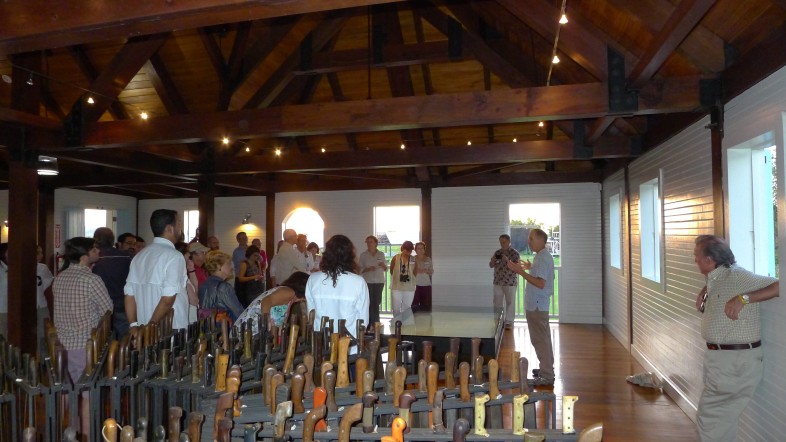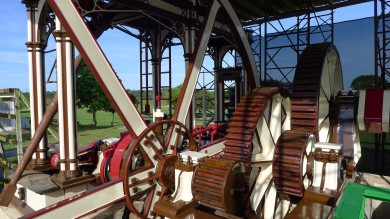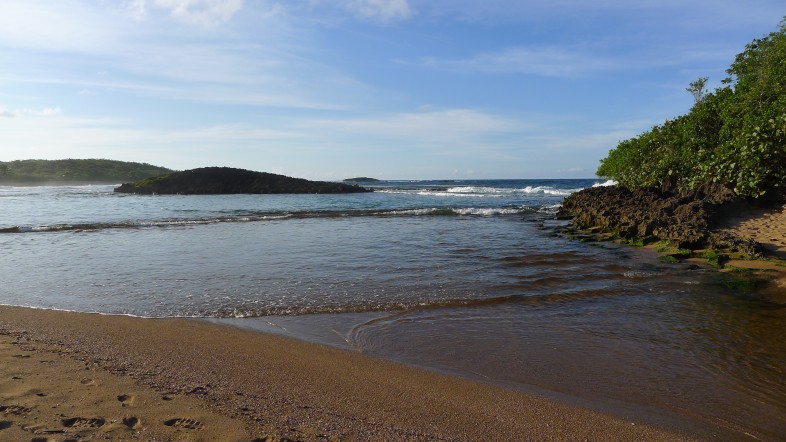
Chris Rimmer talks Bicknell’s Thrush among the machetes, Hacienda La Esperanza, Puerto Rico. / Will Schmidt
The world’s largest machete collection and Bicknell’s Thrush might seem to share little in common. However, the evening of January 18 saw VCE kick off our project to survey Bicknell’s Thrush across Puerto Rico, amidst the planet’s reputedly greatest assemblage of these age-old cutting tools. Some 40 nature enthusiasts gathered at Hacienda La Esperanza— a 2,200-acre former sugar plantation, now conserved in perpetuity by Para la Naturaleza— to celebrate the launch of our effort to better understand the status of Bicknell’s Thrush on Puerto Rico.

Restored sugar cane steam processing machinery from late 1800s, Hacienda La Esperanza, Puerto Rico . /Will Schmidt
After a brief tour of the historic sugar cane processing operation, last active more than 100 years ago, we were treated to a nature walk through second growth limestone forest and mangroves to a pristine beach straight out of National Geographic. Back at the Hacienda, and against an impressive backdrop of hundreds of artfully displayed machetes (formerly used to cut sugar cane), Chris Rimmer spun the tale of Bicknell’s Thrush, which so compellingly connects ecology and conservation across the hemisphere. The bird’s bizarre breeding system and winter habitat segregation of males and females never fail to intrigue. The possibility that Puerto Rico just might support an important wintering population of this globally vulnerable songbird is equally intriguing.
Led by local ornithologists José Slaguero and Julio Salgado, with a cadre of expert Puerto Rican birders eager to help, we’ll blanket the island between now and mid-March. From sea level to mountaintops, dry scrub to wet limestone forest, we’ll search high and low for this elusive bird. We can’t be sure what we’ll find, but 20 years of experience tell us to expect a surprise or two. Stay tuned for updates from the field!


Gorgeous place, buena suerte, Chris! Waiting to hear how many Bicknells you find.. Judy